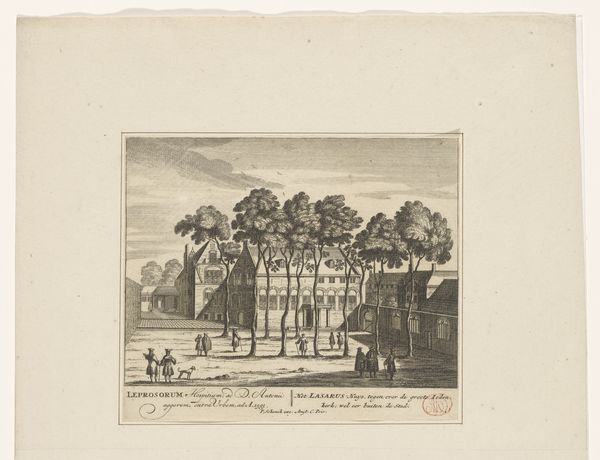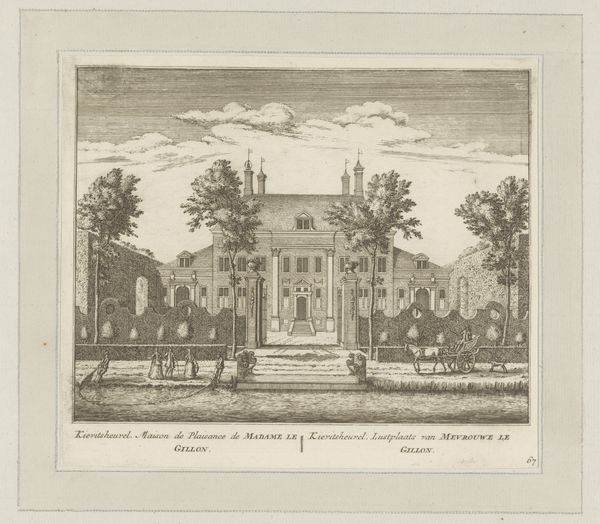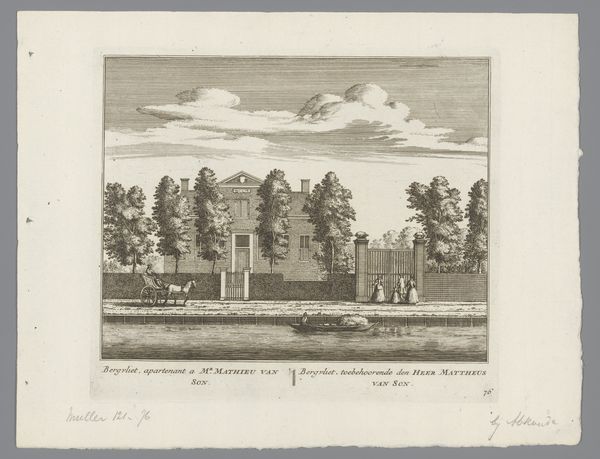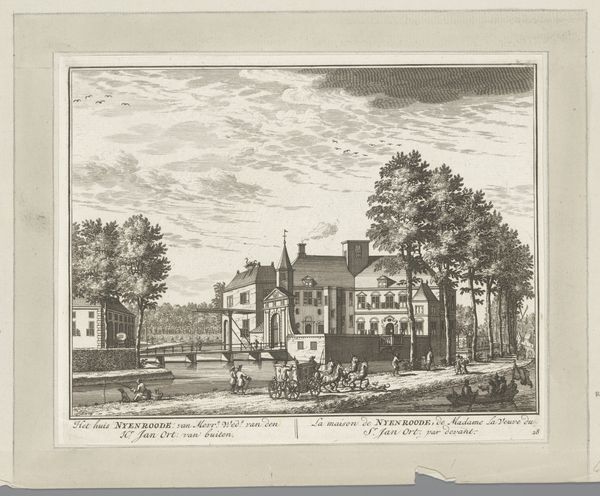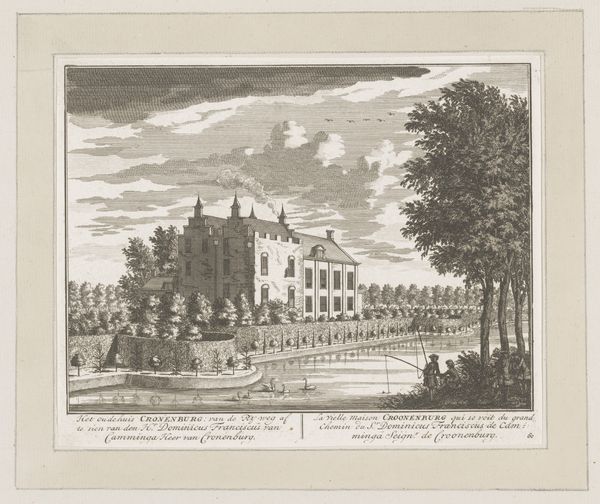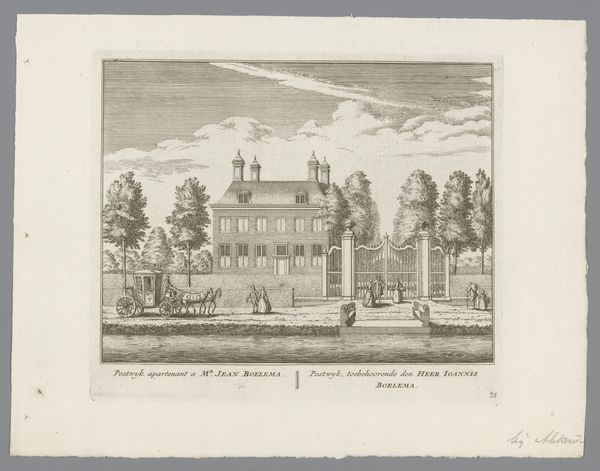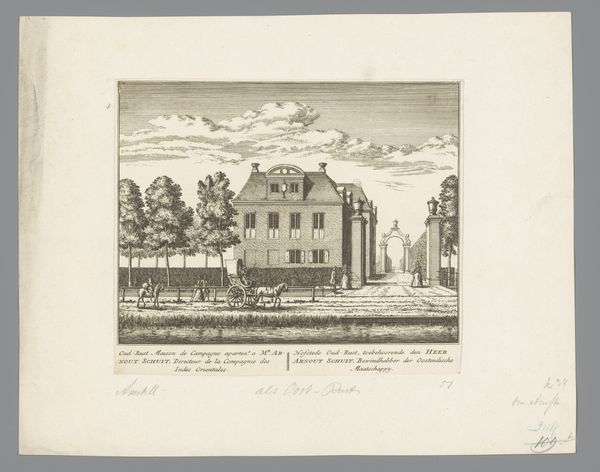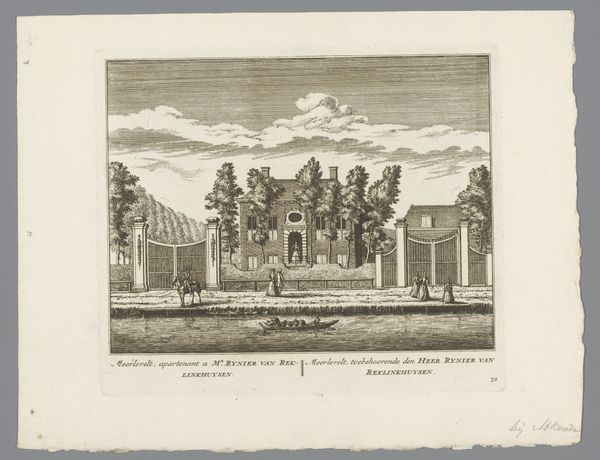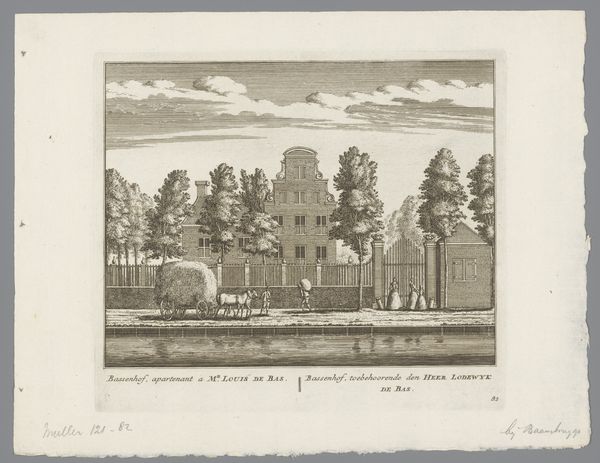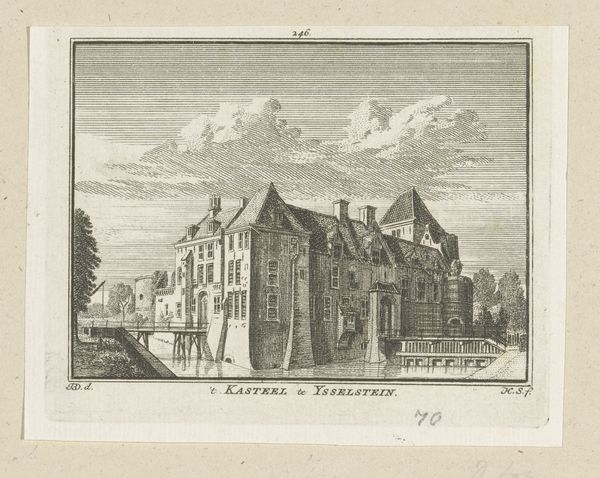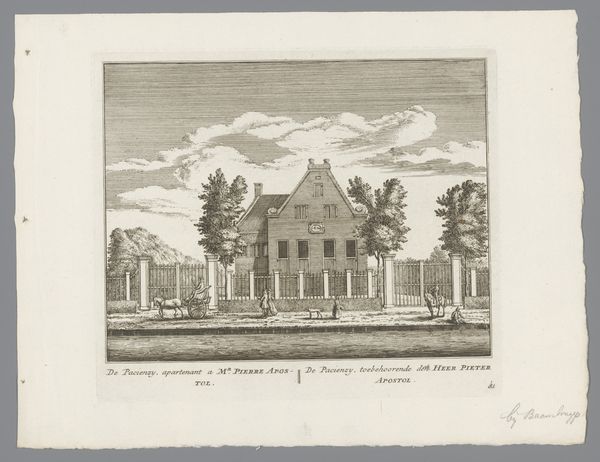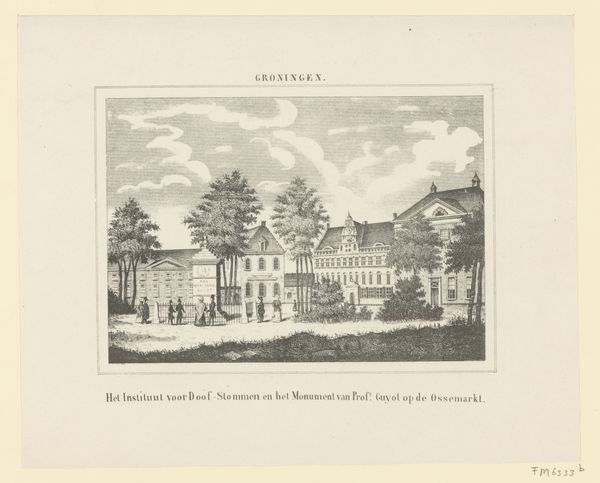
drawing, paper, engraving
#
drawing
#
baroque
#
dutch-golden-age
#
paper
#
cityscape
#
genre-painting
#
engraving
Dimensions: height 169 mm, width 205 mm
Copyright: Rijks Museum: Open Domain
Curator: Before us hangs "Gezicht op het Deutzenhofje te Amsterdam," which translates to "View of the Deutzenhofje in Amsterdam," an engraving on paper. Its creation is attributed to an anonymous artist sometime between 1710 and 1766. Editor: It’s rather lovely, in a quaint, understated way. The detail is meticulous, considering it's an engraving. You get a real sense of the place. There’s a definite stillness to it, even with the suggestion of activity on the canal. Curator: Indeed. These kinds of depictions of almshouses in Amsterdam became quite popular. They served to project an image of charitable stability, reflecting the social values of the city's elite during the Dutch Golden Age, and the baroque period. Editor: That canal is so crucial to the composition and to its literal making. The artist almost certainly relied on that waterway for the transport of materials used in producing artworks like this, thinking about paper mills and printing presses downstream, it just makes me wonder who benefited and suffered to make it. Curator: It absolutely speaks to the intersection of artistry and societal structure. Almshouses, like the Deutzenhofje, were supported by wealthy benefactors, showcasing a public face of philanthropy even as the same families often held immense economic and political power. This engraving would have circulated amongst that same social class. Editor: Exactly. Even the choice of materials, like paper, signifies a deliberate social and cultural choice. This almshouse looks to be impeccably maintained. We see laborers actively moving what looks like product down the canal; I am keen to learn more about how materials used here represent that world and sustain this hofje. Curator: It reminds us that even seemingly benign scenes like this were rooted in complex social realities. These images affirmed the established order while subtly masking any underlying inequalities. Editor: Well, examining how these images came into being is how we get to the real underpinnings of patronage and cultural values present at that time. These images offer so much more than just pretty pictures if we interrogate the system that supported them. Curator: Precisely. This anonymous work offers layers of insight. Editor: It's a fascinating view, brought about by those systems.
Comments
No comments
Be the first to comment and join the conversation on the ultimate creative platform.
